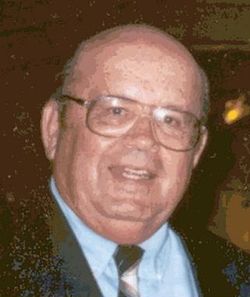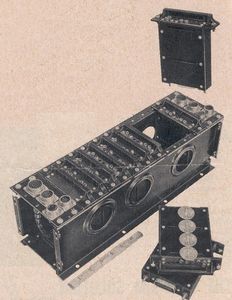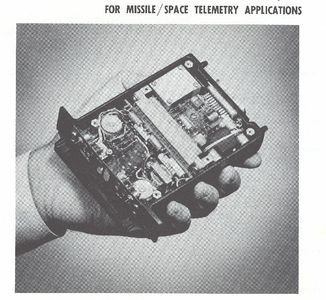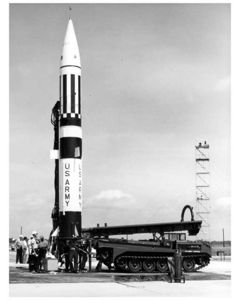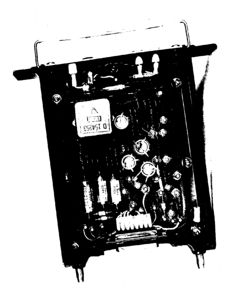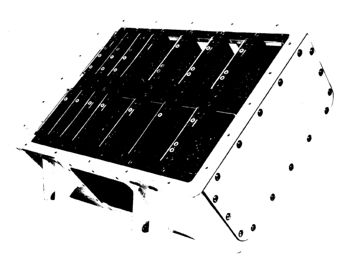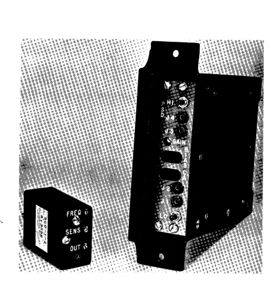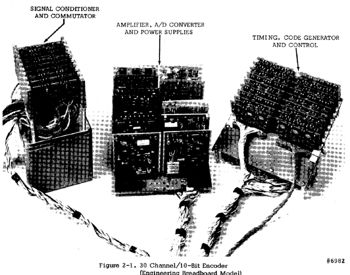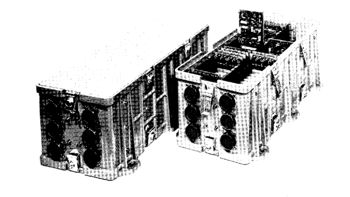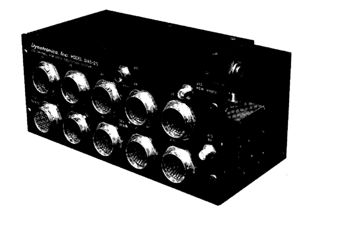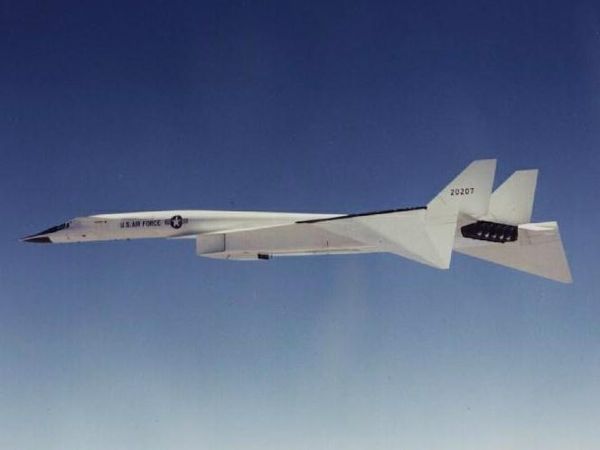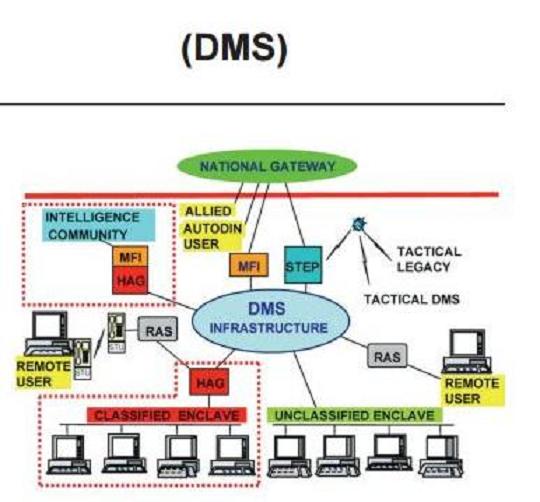First-Hand:Challenges IEEE Faced Supporting Ethical Behavior and Professionalism: Difference between revisions
| Line 262: | Line 262: | ||
of 1977, drafted the initial two sets of procedures for creating the Member Conduct Committee, and that I was the one whom the IEEE United States Activities Board President, John Guarrera, asked me and I did go to the San Diego meeting of the IEEE Board of Directors and presented these proposed procedures to them for adoption. Later, they were merged with another set developed independently by then IEEE member Jim Fairman, an Engineer/Attorney, into what created the Member Conduct Committee. The MCC went into effect in February 1978, some, nearly 40 years ago now. Jim then became its First Chair. | of 1977, drafted the initial two sets of procedures for creating the Member Conduct Committee, and that I was the one whom the IEEE United States Activities Board President, John Guarrera, asked me and I did go to the San Diego meeting of the IEEE Board of Directors and presented these proposed procedures to them for adoption. Later, they were merged with another set developed independently by then IEEE member Jim Fairman, an Engineer/Attorney, into what created the Member Conduct Committee. The MCC went into effect in February 1978, some, nearly 40 years ago now. Jim then became its First Chair. | ||
=== '''<u>THIS IS A WORK IN PROCESS AND IS NOT COMPLETE - Revised July | === '''<u>THIS IS A WORK IN PROCESS AND IS NOT COMPLETE - Revised July 28, 2015</u>''' === | ||
=== === '''<u>ALTERNATIVE TRIAL PAPER TITLES</u>'''<nowiki>===</nowiki> === | === === '''<u>ALTERNATIVE TRIAL PAPER TITLES</u>'''<nowiki>===</nowiki> === | ||
Revision as of 16:50, 28 July 2015
Walter L. Elden, P.E.(Ret),
b. 1931, IEEE Life Senior Member, IEEE USA Ethics Task Force 1977, Presenter of the IEEE USA Member Conduct Committee Proposal to the IEEE Board of Directors 1977, IEEE Member Conduct and Ethics Committees, 1996-1998, IEEE Ethics HOT Line Responder and Advisor, IEEE Life Member of the Society on the Social Implications of Technology, Space Electronics and Telemetry Group 1963, IEEE 802 Local Area Networks Committee 1982, SAE High Speed Data Bus Committee, Chair 1983, IEEE USA Employment Guidelines Committee, IEEE USA Salary Survey Committee, Student Member of the AIEE and the IRE
SUMMARY
This article provides my personal experiences and viewpoints, recalled from over the 50 years I have been a member of the IEEE, watching and experiencing some of the challenges IEEE faced in supporting ethical behavior and professionalism of its members. While I believe most of the other IEEE Global History Network, GHN, articles will deal with Technological matters, I have chosen Professional matters as my main topic area, as a result of the IEEE membership voting to change its Constitution in 1972 to add Professional to its already well established Technical Activities.
Impact of the Revolt of AIEE's "Founding Professional Engineers"
I believe there were two basic "professional activities" problems over the years, from the era of 1912, which led to IEEE having severe challenges in the ethical and professionalism areas arising strongly in the early 1970's. Both of these had their genesis in the early transformation which occurred in one of IEEE's predecessor societies, the American Institute of Electrical and Electronics Engineers, or the AIEE. This was documented well by Edwin T. Layton, Jr. in his book "The Revolt of the Engineers" (The Johns Hopkins university Press, 1986). I will highlight two of these impacts next.
Businessmen's Takeover of the AIEE from its "Founding Professional Engineers"
The first and earliest basic issue was that "businessmen" wanted full membership in the AIEE, so they could direct its interests and activities away from the "professional" interests and activities of the "founding practicing engineers", and toward the business interests of utilities and other industries which they managed. They accomplished this when the New York State Supreme Court ruled in their favor over a suit they brought to broaden membership rules to include them as "engineers" too in the AIEE. This led to the relaxing of the criteria that had been used to ascertain the technical/professional qualifications of the then early "founding practicing" engineers. Subsequent to this, the AIEE/IRE merging into today's IEEE, was limited by its Constitution to engage in Technical Activities alone. It was not until 1972 when the IEEE Members overwhelmingly voted to change IEEE's Constitution, did it begin to engage in "Professional Activities".
The Exemption of Industry Engineers from Being Required to be "Licensed Professional Engineers"
The second issue followed this takeover of the AIEE by "businessmen" again in which this time they used their corporate political power in the AIEE and industry to cause "practicing engineers" who were engaged in industry, to be exempt from being required to obtain and hold a valid legal Professional Engineer's license. This action in essence killed any motivation of the vast number of industry engineers from becoming licensed "professionals", as was envisioned by the earliest practicing founding engineers of the AIEE. By not holding a P.E. license, they were not held accountable to a legal Code of Professional Conduct, ethics, in their industry practices. Industry's argument for this change was that they, the corporation, would be held liable for engineering errors which might occur in their design practice of the corporation's products and services. This P.E. exemption of engineers practicing in industry still exists today.
In the Late 1990's, The IEEE Withdrew Its Support of Ethical Engineers
The two problems just summarized, eventually, in my opinion, led to the IEEE withdrawing already established and operational resources in 1998 in support of ethical engineers who found themselves placed in employment jeopardy. The most important of these services which was terminated, was the operation of an Ethics HOT Line, wherein engineers could call in and receive advisory help. In some of these situations, the help led to referral to the IEEE's Member Conduct Committee, MCC, set up in 1978 to both discipline its unethical members, and to provide support to those placed in ethical jeopardy in their employment.
INTRODUCTION
My Early Activities in the AIEE and IRE, the Founding Societies of Today's IEEE
I graduated from high school in June of 1950 and completed one year at the University of Miami pursuing becoming a Music Conductor of Band, Orchestra or Chorus. The Korean War had begun one month after graduation from high school and I was aware that I could and would be drafted into the Army by June of 1951. I elected instead to complete my Freshman year, then enlisted in the US Navy for a 4 year tour. Upon taking an IQ test at the Recruiting Center, I did well enough that I was be placed in the Aviation Branch and guaranteed attending a 28 week Electronics Technician school. In all, I received nearly a year's training, covering Aviation Fundamental Skills, Electronics and Sonar training.
For 3 years, 1953 - 1955, I maintained 3 pieces of aviation electronic equipment in Squadron VX-!, dedicated to Anti-Submarine Development, those being the Radar Altimeter, LORAN and IFF (Identification Friend or Foe). I assisted a Raytheon Field Engineer and collectively they caused me to switch my career from becoming a Music Conductor of Band, Chorus or Orchestra, to an Electronics Engineer, with the benefit of the GI Bill, which paid for my college education at the University of Florida.
At Florida, around 1956-57, I joined both the AIEE and the IRE Student Chapters, and have remained a Member ever since of their succeeding merger into today's IEEE, now nearly 60 years. One of the engineering courses I took, called Professionalism, Ethics, Economics and Safety, introduced me to the NSPE Code of Ethics and of becoming a Licensed Professional Engineer. It just so happened that our Engineering Dean, Dr. Joseph Weil, was the founders of the Florida Licensing Board of Professional Engineers, which led to the engineering students being informed about the professional side of their future practice, and that awareness, has stayed with me to this day. The most important outgrowth of this was that during the week of graduation, I had prepared, took and passed the then Engineer-in-Training (now call Engineer Intern) exam. This was the first step to becoming a Licensed P.E. later, once I had acquired 4 years of practice as an engineer.
I was particularly influenced by both the NSPE Code of Ethics and the Professional Engineering Licensing law. Together, they set the bar for what kind of responsible and competent engineer I wanted to become in my career and the image as a true "Professional" I hoped to garner from my career. Further, the proceedings of both the AIEE and IRE also had positive influences on me, in being able to see what my forefather engineers had set down on paper in professional/technical journals, presenting what the theory of my profession was all about. Collectively, these influences led me naturally to join the full membership in both IRE and the AIEE once I graduated and started practicing.
A TOTAL ENGINEER EQUALS THE SUM OF HIS/HER TECHNICAL AND PROFESSIONAL EXCELLENCE
I developed early in my career, because of the Professional and Ethics course taught to me at the University of Florida, the philosophy and believed that to become what I coined a Total Engineer, one must excel in both his/her Technical as well as Professional work. So at first I concentrated on performing my technical work as best as I could. But as time went on, I felt something was missing and I began to focus more on adding the professional aspects of engineering into my career practice. And the more that I placed emphasis on the Professional side, the more I encountered resistance both from my employers and well as in my activities in the IEEE. Therefore, before discussing the heart of this paper, I will set out the basis for my having become and accomplished Technical Engineer. After all, at that time, the IEEE's Constitution, only permitted it to engage in "Technical Activities". What follows initially, therefore, are highlights of my Technical resume. Throughout my career, of some 40 odd years, I was responsible for the Technical Designs of Products and Systems which ranged in value from a low of $ 100 Thousand to over $1 Billion.
During My Earliest Years I Was a Systems and a Product Design Engineer
From 1958 through 1960, right out of college, I was the System Engineer with the Martin Company, in Orlando, Florida, responsible for specifying and over seeing 2 contractors develop the Telemetry Signal Conditioning equipment flown in testing the development of the US Army's new solid propellant Pershing Missile. Then from 1960 to 1965, I performed and also responsible for the design and development of Telemetry and Data Acquisition equipment for Airborne and Aerospace applications (high altitude research ballons, aircraft and missiles). I both worked independently and led design groups as a Project Engineer, with total responsibility. All of these equipment had to not only perform to performance specs but also operate while doing so in extreme environments. Initially these equipment were implemented using analog technology but later transitioned to digital through the use of discrete transistors and later integrated circuits. All of this work was done on fixed priced contracts, which we had to bid on to win the work. We created State-of-the-Art products.
Systems Engineering at The Martin Company 1958-1960
Here, below, are the first equipment I was given total system responsibility for, right out of college. They were the Telemetry Signal Conditioning equipments which were flown in the early test vehicles of the US Army's first solid rocket missile, the Pershing, which replaced the liquid fueled Redstone. Later, the Pershing missiles, tipped with Nuclear Warheads, created a defensive shield all along Eastern Europe, to hold back the Russian threat.
Product Development at Dresser Electronics 1960-1962
Beginning in 1960 I moved to one of the companies, Dresser Electronics in Houston, Texas, which had developed some of the above Signal Conditioning modules for the Pershing. I made this move to gain product design experience, as opposed to the systems engineering work I had just done at Martin. There at Dresser, I designed one of the Signal Conditional modules which made up the overall equipment flown in the Titan II ICBM, for the Martin Company in Denver, Colorado, and for the US Air Force.
The figures below show the Frequency Deviation Converter Module I developed, next is the overall Signal Conditioning Equipment it was housed in along with other module types, and in the last figure it shows a 2nd generation miniaturization that I achieved while at Dresser Electronics.
While at Dresser Electronics, I attended and obtained a MSEE degree in 1962 from the University of Houston. For my Master's Thesis, I undertook to investigate the use of Negative Feedback to see if it would negate the effects of temperature changes on the Frequency Deviation Converter I had developed. The work resulted in the inability of this to be achieved. Subsequently, I moved my family back in mid 1962 to Orlando, FL, where I worked for Dynatronics, Inc. a small leading developer of Ground and Airborne Telemetry and Data Processing equipment and systems.
Airborne Telemetry Product Design at Dynatronics, Inc. 1962-1965
At Dynatronics, in Orlando, Fl, I was in the Airborne Section, where we bid competitively to develop and manufacture state-of-the-art custom Telemetry and Data Acquisition equipment. I was a Project Engineer with total responsibility for technical, cost and schedule for work assigned to me, along with the direction of the team of engineers, technicians, draftsmen and planners who worked under my direction.
The products produced were used in High Altitude Research Balloons, Fighter Aircraft, Multi-Staged Satellite Launch Missiles and High Altitude Research Aircraft. Below are photos of examples of some to this equipment.
HICAT-High Altitude Clear Air Turbulence Research Data Acquisition System
This was a special project of mine, being the largest, most complex and the final equipment design I did before switching into Systems Engineering for the remainder of my career. I was assigned as the overall Project Engineer, with total responsibility for the design, development, verification testing, schedule, staffing, Team Direction and costs. The complexity of this work is shown in the photo below.
High Altitude Clear Air Turbulence HICAT Data Acquisition System Flown in an Air Force U2
The purpose of this system was to enable an Air Force U2 aircraft to gather Clear Air Turbulence data at High Altitudes, around the world, where there was high amounts of turbulence. This was research being conducted to determine this effect so as to be able to design the Super Sonic Transport Bomber, SST. Ultimately this was for the US Air Force, and Lockheed Aircraft, Burbank, CA, was the Contractor. We were supplied 3 of the equipment shown in the above photo. One was an Ampex Data Recorder, another was an IRIG Time Code Generator, and the third was a Pilot's Control item. We developed the PCM Data Acquisition System and the Field Checkout Unit. What caused the DAS to be so large was the fact that each of 40 input channels had to be filtered to restrict the bandwidth to an extremely low frequency, and large components were required to produce the needed filtering. This was the first all Digital PCM System the Air Force had used and the first time Lockheed had employed Integrated Circuits. We accomplished both firsts on this one program.
Below are photos of the actual U2 which this was flown in and a prototype SST the data was intended for. This U2 was eventually retired and placed in the Air and Space Museum at Wright Patterson AFB, Dayton, OH.
- The Air Force U2 which flew the HICAT equipment.
- The Air Force SST for which the HICAT Research was intended.
I was fortunate enough to have spent a week training the Lockheed engineers about the HICAT system, then went with them to Edwards Air Force Base where I got to see it installed in the flight U2, and witnessed the first U2 fight test, which was successful. Thereafter the system was flown all around the world over the next 2 years where there was turbulence.
My Transition from a Product to a System Engineer
In 1965 I left Dynatronics to work again at The Martin Company, then re-named Martin Marietta. I was convinced during my interview, by a more senior and experienced system engineer, that it would be a better career move for me, which I followed. For the remainder of my career, I worked in what some called, Advanced Programs, as a Systems Engineer. All of these programs were aimed at developing and bringing in new business and focused on the bigger, total system, perspective. We were challenged to develop new solutions using state-of-the-art and sometimes new technologies and approaches.
Here, below, I highlight the several companies I worked for, and the new business systems I was involved with.
Martin Marietta, Orlando, FL 1965 - 1968
- US Army Time Division Multiplexer Voice/Data Sharing for Forward Field Observers
- Extremal Detector for Voice Encoding
- ATAC Army Tactical Area Communications System
- Automation of Technical Control Systems
Honeywell Communications Division, St.Petersburg, FL1968 - 1972
- ATACS Automating Air Force Technical Control Systems Study
- McNamarra Electronic Battlefield Detection System
Martin Marietta Communications Division, Orlando, Fl 1972 -1974
- AN/TSQ-85 Army Technical Control System
- Forward Artillery Controller Communications
- Communications for the HELFIRE System
- FAA Air Traffic Control Electronic Voice Switching System
- Army Tactical Communications System
- Air Force Nodal Area Communications System Study
Independent Consulting Engineer, Orlando, Fl 1974-1975
- Expert Witness in a Multiple Death Fire for Plaintiffs
Planning Research Corp/NASA Headquarters, Kennedy Space Center, 1975
- Electronic Voice Switching System for the Space Shuttle Base Communications Study
NCR Corporation, Columbia, SC 1975-1980
- Represented NCR on ANSI X3S37 Public Data Networks Standards Committee
- Packet Switching Networking and Data Link Control Communications
- Member of NCR System Network Architecture Committee
- Member of NCR Data Encryption Committee
Harris Corporation, Melbourne, FL, 1980-1997
- Reported to V. President of Development of a new Office Automation System
- Represented Harris Corp on the IEEE 802 Local Area Networks Standards Committee, Chairing its System Management Task Force
- Contributed Networking Solutions to Interconnect Distributed Office Terminals
- Member of SAE High Speed Data Networks Standards, Chaired a Committee
- Program Manager/Technical Investigator for Survivable Local Area Networks for Air Force
- Program Manager/Technical Investigator for Multimedia Communications Study for Air Force
- High Speed Data Networking for NASA Data Capture, Storage and Distribution
- Network Management Subsystem for the FBI Remote Data Terminal System
- Modeling and Multiplexer For Air Force Air Tasking Orders
- Packet Switching for an FAA Air Traffic Control System
- Classified Networking Technology Studies
- Organized an Annual Corporate Networking Conference with Exhibitors and Papers Presented
- Initiated a Corporate Seminar on the new Integrated High Speed Networking Standard
- Initiated Harris Corp celebrating Engineer's Week on an Annual Basis
- System Architect for the Defense Messaging System, DMS, for the Air Force
Defense Messaging System, DMS
The Defense Message System, referred to as DMS, was a US Air Force new procurement program to supply all of the Military Services and Civilian Agencies of the Federal Government, with a new, modern, secure, multi-media electronic messaging capability. Denny Hanson was assigned as the Chief Systems Engineer and I was assigned as the System Architect reporting to him, on the proposal, with Harris Corp serving as the Prime Contractor.
There were 3 major Subsystems: an X.400 Message Switching Element, an X.500 Directory Element and an overall Network Management Element, and User Agents (software in user terminals). There were over a dozen Teammates and Suppliers, one located in England. Our team worked on this proposal for 2 years. The DMS was intended to serve up to 2,000,000 users, on Large, Medium and Small sized bases, in addition to the Civilian demographics. It was required to be end to end secure, handle eMail, Messaging, Imagering, and Video. Additionally, there was a very special requirement to be able to handle an Emergency message in a specified time frame as well. There was a separate System Design Appendix to the proposal, in which we had to prove a variety of performance metrics. This was the most technically complex task I had ever been assigned responsibility for. I had 2 PhDs plus one MS engineers working full time using both simulation and calculation to produce the results called for.
This was the largest program in both scope and dollar value which I had ever been associated, with a proposed cost to the Government of over $1 Billion. Our proposal was rated #1 Technically, but the Government chose a competitor over our proposed offering and solution.
MY INCREASED INTEREST IN PROFESSIONALISM AND ETHICS
Impact on My Professional Conscience
From the time I first began to practice engineering in industry, as I progressed in my career from one company situation to another, I began to feel that something was missing as an engineer. I saw that other engineer disciplines' practice, such as the Civil, Structural, Electrical and Mechanical engineers who practiced in the Consulting field, were all Licensed Professional Engineers and seemed to be treated more as professionals than we engineers who were practicing in industry and not Licensed P.E.s were. That seemed to me to be an imbalance, based on what I had learned in that Professional course taken back at the University of Florida. And Ethics seemed to be more important to me, if I wanted to be considered a true Professional. I began to develop the view that we engineers in industry ought to be treated better than just mere workers, but how was one to go about achieving that status?
Working for a small company of a couple hundred people, winning fixed price contracts through competitive bidding with very aggressive schedules, led to engineers having to work extra hours on their own, without additional compensation. The technology involved was at the time "state of the art" and was very exciting to be involved with. But, over time, the constant working of up to 60 hours a week became old and I began to ask myself "Is this what an engineer is expected to do and still be recognized as a Professional?" During the entire period there was no emphasis or the speaking about adhering to a Code of Ethics or Professionalism in that work place, but I had remembered those topics from that course I took back at the University of Florida and that I was preparing to sit for the PE Exam to become licensed and so my work environment began to worry me and I realized it was having a negative impact on my family life.
The BART Ethics and Safety Case and IEEE's Amicus Curiae Legal Brief
Around 1972, while working at Martin Marietta, I came across an IEEE publication, called the Committee on the Social Implications of Technology, or CSIT, in which Steve Unger, PhD at Columbia University, had written about the plight of 3 engineers employed by the Bay Area Rapid Transit, or BART, system in California. They had been fired for raising their concerns over safety defects they observed in the development of the new BART Train System, and then they brought a suit against BART. IEEE Spectrum magazine subsequently published articles shedding light on the specifics of what these 3 engineers had attempted to do to remedy the unsafe designs they had uncovered. Then a milestone in IEEE occurred when the IEEE Board of Directors, in 1974, approved entering the BART Case, with an Amicus Curiae, or Friend of the Court brief. In this, IEEE used the leading engineering Codes of Ethics to argue that "engineers had a responsibility to protect the public safety and to be fired for that action was unlawful". Ultimately, the 3 engineers settled with BART and the case did not go forward, unfortunately. If it had, the IEEE's brief may have produced a landmark decision regarding the responsibility of engineers to protect the public's safety and to discharge one for doing this was unlawful.
Constitutional Change Adding Professional Activities, IEEE USA Formed
Since the founding of the forerunner societies to the IEEE, they being the AIEE and the IRE, their focus was upon strictly Technical Activities. Then when they were merged into today's IEEE, its Constitution continued to only permit it's activities to be Technical. However, beginning around the early 1970's, with the decline in the Aerospace industry, with large numbers of US engineers being laid off, suddenly there became a ground swell to have the IEEE get involved with career, employment, salary, ethics and professional activities, for the first time. This led to a vote of the membership in 1972 in which over 80% of the membership approved having IEEE change its Constitution, which added Professional Activities to its long standing Technical Activities. One of the long term outgrowths of this change was the creation of the IEEE USA entity. This focused on just the IEEE Members in the USA and established programs concentrating on the Professional aspects of engineering and Members' careers during employment.
IEEE's First Professional Activities Committee, PAC, Formed in 1972 in the Orlando Section of IEEE
With the announcement of IEEE adding Professional Activities, I attended the next meeting of the Orlando Section of IEEE, in December 1972, at which coincidentily, then outgoing IEEE President Robert Tanner happened to attend. At that meeting, I asked for the Board to approve creating a Professional Activities Committee, or PAC, as now authorized by the changed Constitution, and got approval. This PAC, to my knowledge, was the very first one to be established under the changed IEEE Constitution, and I became its first Chairman.
With a PAC Charter, I proceeded to hold monthly meetings, with speakers on subjects such as Professional Licensure, Ethics, Employment Guidlines, Salary Surveys, Discrimination, Product Safety and Liability, to mention some. These meetings were always well attended. Then, as the Orlando Section was holding the next IEEE Region 3 SOUTHEASTCON in April of 1974. This was an opportunity to see if I could get approval to add a Professional Activities Program Session along side of the traditional Technical Activities Stream.
IEEE's First Professional Activities Session at Region 3 SOUTHEASTCON
I proposed this to the Orlando Section, got approval and sent out announcements calling for Professional Topic papers. This was going to be a first in IEEE and was a lucky happening. We received enough papers and so a Professional Activities session was organized. I had been documenting my findings on various Professional Topics and so just wrote papers on them and submitted them for consideration. In all, 5 of my papers were approved along with one Technical paper I co-authored with Terry Duffield on the results of a study we did for the US Air Force on Survivable Distributed Base Communications.
Professional Engineer Licensure and the Industry Exemption
History of How the Exemption of Engineers Working in Industry from Being Required to be Licensed Professional Engineers Came About
During SOUTHEASTCON 1974, my Chairmanship successor of the Professional Activities Committee, Ted, and I met with our former Dean of Engineering, Dr. Joseph Weil, who also attended the conference. We wanted to get from him, the history of how the exemption provision in the Professional Engineers licensure law, FS 471, in the state of Florida came about. Dr. Weil was in the best position to share this history with us, as he, while Dean of Engineering at the University of Florida, where Ted and I had both attended, personally helped establish the Florida Licensing Board of Professional Engineers and was a Founding Member. Further, he was there when the law was changed to remove the requirement for engineers employed in industry to be licensed P.E.s. He told us the following:
The Corporate Telephone and Electric Utilities "exerted enough political weight and got the Legislature to amend Florida Statute 471 to exempt engineers working in industry from the requirement to become licensed P.E.s". The argument used, he told us, was that "they, industry, would be liable for producing unsafe or defective products, and that would protect the public". At the same time, other State Boards were doing the exact same thing.
It is interesting to remember that during the early years of the AIEE, the then Businessmen, did a similar thing when they went to the New York State Supreme Court and got a ruling which changed and relaxed the membership requirements such as to permit them to now become voting members, taking the control of AIEE away from the founding professional engineers, and to direct the AIEE towards their business interests. During my most active times serving on professional and ethics committees of the IEEE, when I was active during the 1980's and 1990's, I continued to see examples of this corporate over influence in IEEE activities (my opinion, and more on this later).
I Became Licensed as a Professional Engineer in Florida
In light of the fact that my Communications Division was beginning to bid and develop products for the non-Military commercial market, I requested and got approval in 1973 to go to UCLA where I attended a one week course titled "System Safety and Product Liability" taught by an Attorney-Engineer named George Peters. He was licensed as an attorney, engineer, and psychologist. There I became knowledgeable about the responsibility of engineers to design safe products and the liability risks when they are not and fail or cause injury. I returned to my Company, Martin Marietta, with the mission to instill in my fellow engineers there, and in the local IEEE PAC, to importance of becoming Licensed P.E.s, to uphold ethics, design safe products and to strive to be recognized as a true Professional. Then In February 1974, I learned that the Florida Board of Professional Engineers had approved me to become a Licensed Professional Engineer. I had taken the PE Exam the previous November and this notification was received by me with excitement.
P.E. Licensure Exemption of Engineers Working in Industry, Product and System Safety
The hallmark of what I had considered true Professionalism was for an engineer to become licensed by the State with a Professional Engineer protected title. With this title, came the legal obligation of each P.E. to adhere to the Legal Code of Professional Conduct embedded in the Licensure law, as enforced by the State P.E. Board. Among other obligations, the "protection of the public's health, safety and welfare" were deemed paramount. That was the fundamental issue which the 3 engineers in the BART Case faced. Not only would the public benefit from this professionalism, but the P.E. engineer working in industry would be protecting one's own Employers from possible liability suits, as a result of this responsible safety consciousness. Then over time, the prestige and standing of P.E.s employed in industry would be hightened, I believed.
However, for the most part, in my view, engineers employed in industry were robbed of this incentive to become licensed P.E.s years previous when the Corporate powers to be at the time were successful in getting the States' P.E. laws to "Exempt engineers in industry from being required to become licensed".
My Professional Activities Became an Increased Obstacle for My Employer
Awarded IEEE Orlando Section Professional Engineer of the Year[edit | edit (wikitext)]
At the 1974 Engineers Week Meeting, I was the recipient of the Engineer of the Year Award for Professional Activities, by the IEEE Orlando Section. This recognized that I had proposed and formed the first Professional Activities Committee in the IEEE, and led it through its first year of operating.
Management Pressured Me Not to Present My 5 PAC Papers at IEEE SOUTHEASTCON 1974
When IEEE SOUTHEASTCON was held, in Orlando, FL, for the Professional Activities Session, there were 10 papers presented, of which my 5 were included. My topics covered, System and Product Safety, Licensure of Professional Engineers in Industry and the Industry Exemption, Salary Survey, Employment Guidelines and Ethics. When my then Director of Engineering learned I was going to present these, he called me into his office and said that I was "an extremist and that no one else had ever done that" and pressured me not to go forward doing that. Not only was he a Licensed Professional Engineer himself, but additionally was a Senior Member of the IEEE, like I was. I disregarded his pressure, proceeded as planned and presented them, knowing this objection from my Management.
This was not the first time he offered his view that my Professional Activities Committee initiative and promoting them was not acceptable and both pressure and a series of unusual work assignments were starting to occur, coinciding with my PAC initiatives. This all happened during the period when I became licensed as a Professional Engineer, a recipient of Engineer of the Year for Professional Activities, the organizer of the first Professional Activities Committee in IEEE History, the organizier of IEEE's first Professional Activities Program at a major conference, that being the Region 3 SOUTHEASTCON, and then the presenter of 5 PAC papers and co-author of one Technical Paper.
I Was'Laid Off "Under Coercion" for my Professional Activities
In July of 1974, I was called in to the office of him, the Director of Engineering, to receive my Performance Evaluation. In attendance, additionally, were 2 others. One, my Project Engineer whom I had been working for on an Army Communications Study, and the other my Administrative Section Leader. There I was made to read out loud the 4 page appraisal, which he had written, with some inputs probably from the other two. When I completed reading it aloud, I said, "This is all Bull Shit". Later, I did an analysis of its accuracy, and concluded that around 85% of what had been written was not true, fabricated and written to frame me. On August 24, 1974, I was called again into The Director of Engineering's office, where this time his boss, the Vice President of Engineering, was present. I was given the option to either resign or be terminated for "not meeting schedules", which was never commented on in the Performance Appraisal the prior month. Ever since that Performance Review, I had contacted an outside lawyer as I felt the future did not look good. I requested and was allowed to call and speak with him, explained what was happening, and he advised that I "resign under coercion". And that is what I did. I was then escorted out of the building.
I had been saving key papers and documents just in case this might happen, and over the next several years wanted to bring suit against that former Employer, but at the urging of my wife, I did not. I did submit a charge of violation of the IEEE Code of Ethics against that Director, to the newly formed IEEE Member Conduct Committee, but they declined to approve going forward with it. That whole experience then changed my life for the better in the technical field and I got very involved with Professional Activities in the IEEE at the highest levels, even tho at the time I could not see that happening.
The Transitioning of My Career After Being Terminated
It was nearly a year before I became fully employed again. During this period, my emotional state was such that I was not ready to re-enter industry to work. I focused on my activities in the Florida Engineering Society, the state organization of the National Society of Professional Engineers, NSPE, on its Engineers in Industry Committee, in which I focused and researched the topic about the Exemption of Engineers in Industry From Being Required to be Licensed P.E.s.
During this period I was able to make good use of my P.E.License when I consulted through an Engineering Safety firm, in which I was engaged to investigate the likely cause of a fire in a home trailer, which killed the young two children. I was deposed under oath for 6-8 hours, by the 2 companies I had concluded whose products were the most likely source of what started the trailer fire. Subsequently, I was informed that during the weekend prior to when the trial was to begin, both companies settled with the parents, out of court, and the case ended. I felt my testimony must have been a persuading factor, leading to this outcome for the parents, who lost their 2 children.
Eventually, I accepted a position (downgraded as it was at the time) with an outsourced engineering firm located on the Kennedy Space Center of NASA, in the Headquarters Building. There I developed a set of requirements for a voice telephone system, which was to be used in the Space Shuttlle program. Because of the practice at the time of having one company bid against another to become the outsourced contractor at NASA/KSC, but continuing to employ most of the same engineers, always at a very reduced salary, this became recognized as being very un-professional but continued.
Then I moved my family to Columbia, SC where I was fully employed again at a proper salary, in the Advanced Development arm of an International commercially based company (my first time not working on military or Governmental programs). In this new environment, I became involved in a brand new technology, Public Data Networks, employing Packet Switching technology based on National and Internationally agreed standards. I volunteered and bacame the representative of my company on the ANSI X3S37 Public Data Networks standards committee. I also became a member of my company's Network Architecture and Data Encryption Architecture/Standards Committees. On the ANSI Committee, I volunteered and Chaired a Task Force where we advocated adding in the standard coverage for Datagram service as well. This work with this company led to my writing and presenting several technical papers at conferences.
After a period of 5 years working in this new commercial technology, I was approached, interviewed and accepted a further upgraded position reporting to the Vice President of Development back in my home state of Florida. There, it was developing a new Office Automation System. Eventually I remained employed for 18 years with the parent company and ultimately retired in 1997.
A lesson learned from having been laid off earlier in my career, for my proactive professional and ethical activities, was that it led me to a new career, learned new technology, upgraded my position and salary, and made my wife and daughter very happy.
Formation of IEEE's Member Conduct Committee, the MCC
There are two well documented accounts of the modern history of IEEE's involvement with ethics, member discipline, ethical support of engineers placed in jeopardy, an ethics hot line, etc., written by Dr. Stephen H. Unger, X, Y, starting with IEEE's support of the 3 BART Case engineers, and leading to the formation of the original Member Conduct Committee in 1978. At that time, the IEEE USAB had an Ethics Committee under it, focusing on advancing each of the ethics initiatives identified previously. In the late 1970's, when I was employed by the International commercial company in Columbia, SC, I was appointed to the USAB Ethics Task Force, charged with developing proposals for 2 ethics initiatives. One was for disciplining IEEE Members found to have violated its Code of Ethics. The second was for providing support for engineers who were placed in jeopardy for upholding ethical standards.
One Saturday morning, in the Spring of 1997, this Ethics Task Force, met in a New York City hotel and developed the framework and procedures for both ethics initiatives. We sketched these on large sheets from a pad on an easel; one for Discipline and one for Support. I sketched the Support process flow diagram, and in the late 1990's-early 2000's, I submitted it to the IEEE History Center. Recent efforts to retrieve the Support chart have not been successful.
It is ironic to now look back and realize that it was Steve Unger and I, with others, who, in the Spring of 1977, drafted the initial two sets of procedures for creating the Member Conduct Committee, and that I was the one whom the IEEE United States Activities Board President, John Guarrera, asked me and I did go to the San Diego meeting of the IEEE Board of Directors and presented these proposed procedures to them for adoption. Later, they were merged with another set developed independently by then IEEE member Jim Fairman, an Engineer/Attorney, into what created the Member Conduct Committee. The MCC went into effect in February 1978, some, nearly 40 years ago now. Jim then became its First Chair.
THIS IS A WORK IN PROCESS AND IS NOT COMPLETE - Revised July 28, 2015
=== ALTERNATIVE TRIAL PAPER TITLES===
HOW MY "PROACTIVE" IEEE PROFESSIONAL ACTIVITIES NEGATIVELY AFFECTED MY ENGINEERING CAREER IN INDUSTRY AND MY INVOLVEMENT IN IEEE ACTIVITIES
TOPICS TO BE DEVELOPED AND DISCUSSED
- Employment Guidelines, Salary Survey, Employee/Employer Relations
- Member Conduct Committee, Member Discipline and Support of Ethical Engineer, Corporate Business Influence and Discrimination In IEEE Committees (Employment Guidelines, MCC and Ethics Committees), Lack of Openness About MCC Actions/Support
- Ethics Committee, Codes of Ethics, Replacing Engineers with Members in Code
- Ethics HOT Line
- IEEExecutives or Engineers ???
TOTAL QUALITY AWARD TREATMENT BY MY EMPLOYER
REJECTION OF ETHICAL CONFLICT RESOLUTION SERVICE INITIATIVE
EXECUTIVE OPINION ABOUT WANTING IEEE NOT TO GET IN BETWEEN EMPLOYEES AND EMPLOYER
IEEE's and My Industry Experience of Disregard Towards Proactive Ethics Activities
Walter L. Elden, P.E. (Ret),
2028 Crane Lakes Blvd.,
Port Orange, FL 32128,
w.elden@ieee.org _______________________________________________________________________________________________________________
- Engineering and society
- Ethics & morals
- Law & government
- Social responsibility
- Business
- Management
- Engineers
- Product safety engineering
- Professional associations
- Bylaws
- Committees
- Constitution
- Mission and vision
- Policies & procedures
- Historical activities
- Standards
- Professional training and development
- Code standards
